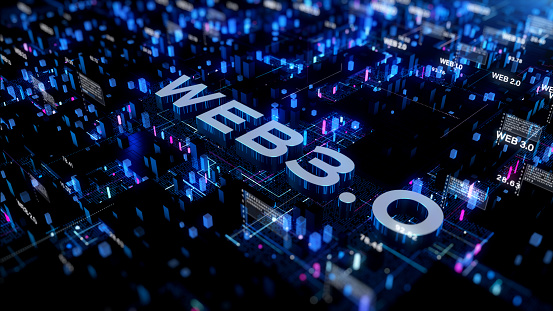Metaverse, an all-inclusive virtual universe, has become increasingly fashionable in recent years. Many people consider the Metaverse the next logical step in developing the internet because of the rise of virtual and augmented reality technology and the popularity of online communication and entertainment. There have been initial investments in the development of Metaverse technologies by several large companies and platforms. Investors and business people are also very curious about the Metaverse because of its promising economic future. Some think it will be the next big thing in online shopping, marketing, and entertainment and will help propel the economy forward in the coming years.
Various Key Technologies Used in the Metaverse Development
The Metaverse is a shared digital environment where users can communicate with one another and interact with virtual objects. The Metaverse is rapidly becoming a crucial area for companies to investigate. Businesses have a lot of room to expand and experiment in the Metaverse. Companies must keep up with the latest technological innovations and explore how to use the Metaverse to advance their aims. Several Metaverse technologies, such as those listed below, are necessary for the growth of the virtual world.
- Virtual Reality (VR)
- Augmented Reality (AR)
- Blockchain technology
- 3D Modeling and Animation
- Artificial Intelligence (AI)
- Cloud Computing
- Internet of Things (IoT)
- Edge Computing
- Web 3.0
- Mixed Reality (MR)
1. Virtual Reality (VR)
The rise of virtual reality (VR) as a technology is crucial to expanding the Metaverse. Virtual reality is a great tool for making the Metaverse more immersive. Users will feel they have been transported to an entirely new location. There are many possibilities, from interactive virtual avatars to photorealistic settings. Virtual reality allows for developing social experiences in the Metaverse, such as online conferences, concerts, and other events. Users can communicate and collaborate in real time as if they were in the same room. Virtual reality allows businesses to create online showrooms, interactive product demos, and other immersive experiences. Users can interact with the products in novel ways.
2. Augmented Reality (AR)
As technology advances, Augmented Reality (AR) may become an important contributor to the growth of the Metaverse. Combining augmented reality (AR) tools with the Metaverse can provide users with a one-of-a-kind and engaging experience. Integrating digital elements into the real world is one of the primary uses of AR in Metaverse development, which is intended to improve the virtual experience. Wearable devices, such as augmented reality glasses or smartphones, can superimpose digital information onto the real world, creating the illusion that the virtual and real worlds are merging. While wearing AR glasses, users can interact with digital content superimposed onto their physical surroundings, such as virtual stores. Because users can communicate with one another in real-time regardless of their location, the social experience could be enhanced.
3. Blockchain Technology
If you want to know how the virtual world will progress, look no further than one of the most important Metaverse technologies: blockchain. Users retain complete authority over their digital possessions in a blockchain-enabled decentralized system. This can potentially reduce theft and fraud while also giving users greater control over their digital property. Blockchain technology makes interoperability between Metaverse platforms possible, which facilitates the transfer of users’ identities and assets between virtual worlds. As a result, the Metaverse can become more accessible and interconnected, allowing users to explore various simulated settings freely. Smart contracts, created on a blockchain, are legally binding and can carry out their terms once both parties agree.
4. 3D Modeling and Animation
Web3 developers employ 3D modeling to produce convincing simulations of physical spaces. Landscapes, structures, vehicles, and home furnishings may all be part of these simulated settings. Developers can create virtual environments and objects with high-fidelity detail and texture using 3D modeling software. When populating the Metaverse, 3D modeling and animation are used for more than just setting the scene. With these resources, programmers can give their avatars believable personalities, actions, and facial expressions. This is of utmost significance in interactive media such as Web3 games, social experiences, and other software that requires users to participate. To make objects that react to user input, 3D modeling, and animation can be used. With the help of 3D modeling and animation, it is possible to provide users with a fascinating adventure.
5. Artificial Intelligence (AI)
Technology, including AI, is being used to create the Metaverse (AI). In the Metaverse, AI development helps make each user’s experience unique. Algorithms powered by artificial intelligence can learn from user behavior to tailor the experience and interactions to the individual. Moreover, it aids in predicting user behavior and preferences based on previous interactions, paving the way for more personalized and specialized experiences. The experience for the user can be enhanced in this way. Chatbots and virtual assistants powered by artificial intelligence can be interacted with by users to acquire data, answer questions, and perform various tasks.
6. Cloud Computing
Massive amounts of data storage space are required to facilitate the production and administration of 3D models, textures, animations, and other digital assets for use in the Metaverse. Cloud storage is a highly scalable and inexpensive option to keep and retrieve such purchases. The massive amounts of data and processing power needed to run the Metaverse can be supported by cloud computing’s infrastructure. It’s useful for keeping the Metaverse’s fluidity and responsiveness strong despite the constant influx of new users.
7. Internet of Things (IoT)
Because it allows for creating a network of connected devices that can collect and transmit data in real-time, the Internet of Things (IoT) is a crucial technology for the growth of the Metaverse. Smart homes and buildings enabled by the Internet of Things can create a convincing and engaging setting in the Metaverse. In the Metaverse, the Internet of Things can track real-time user actions. Access to this information can help create a more unique and satisfying digital setting for each user. By incorporating real-world data and providing a more personalized and responsive environment, IoT can contribute to developing a more seamless and immersive experience in the Metaverse.
8. Edge Computing
As an alternative to sending data to a central data center, “edge computing” processes it at the network’s periphery. If you’re working on a project for the Metaverse, you should know that edge computing is crucial to maximizing the potential of virtual settings. Metaverses are virtual worlds that demand a lot of processing power to design and display realistically. Developers can scale the processing of these ecosystems across multiple devices by leveraging edge computing. Greater through interconnected systems, easing pressure on isolated computer systems and data facilities.
9. Web 3.0
There are many reasons why it’s crucial to use Web 3.0 principles when creating a Metaverse. The concept of decentralization is central to Web 3.0 technologies. By incorporating this technology, developers of the Metaverse can build a network not governed by any central authority. This can potentially improve the Metaverse’s accessibility, safety, and confidentiality. Web 3.0 allows developers to make programs compatible with each other and other systems. As a result, people in the Metaverse can use unified login credentials across all of their favorite Metaverse services.
10. Mixed Reality (MR)
The use of MR in the creation of the Metaverse is promising. MR creates a more engaging and interactive digital content experience by fusing digital and physical elements. With the help of MR technology, users can design digital representations of themselves that accurately capture their appearance and motion. This has the potential to deepen the experience of being “there” in the Metaverse. Using MR, people can interact with Metaverse objects as they interact with real-world objects: by gesturing with their hands. When this occurs, the Metaverse can start to feel like an organic continuation of our own world.
Conclusion
A top web3 development firm can use these tools to build an immersive, explorable, and enjoyable digital environment.
Among the many things they can make for your MMORPG is 3D models, textures, and animations.




